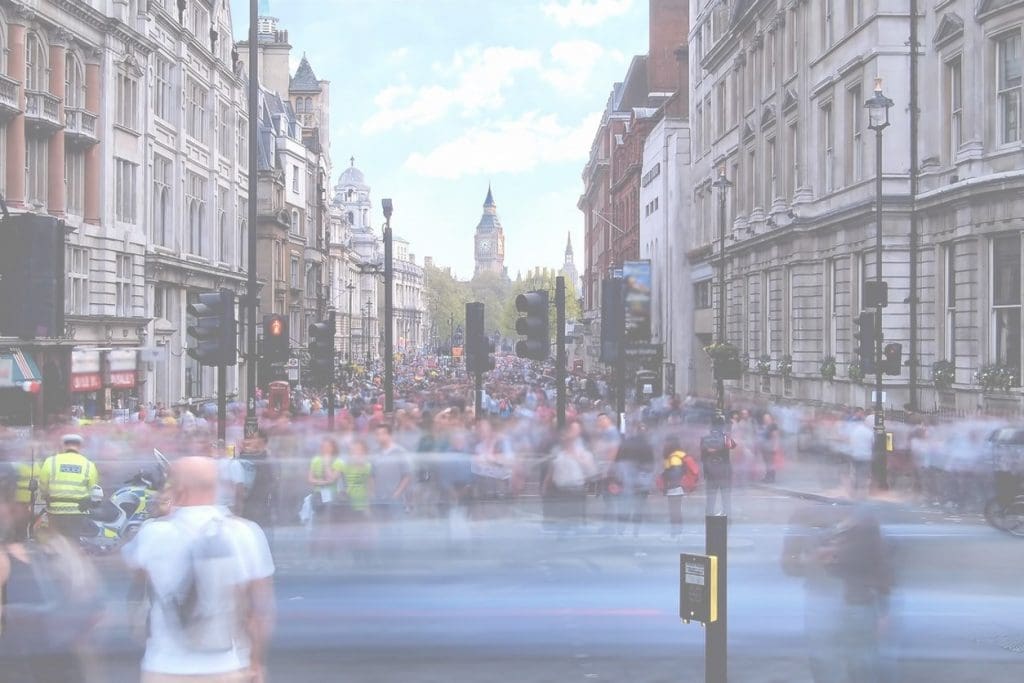

In December 2023 the airspace rights to a single building in Battersea in London were being auctioned for £10,000. Despite there being no planning permission to build, the auctioneer Phillip Arnold thought it could fetch more.
Mr Arnold explained to the BBC that the plot next door was being redeveloped with an additional storey and another, two doors down, had permission for the same.
“You’d like to think there’s a better chance than most with this,” he said.
The story also was widely reported by media outlets, including the Daily Mail, Time Out and Metro, with headlines like ‘Fresh air for sale!” and “This plot of literal air in Battersea could be yours for £10,000.”
As it turned out, the auction was delayed until the new year. But is auctioning airspace in London a property trend we’ll see more of in 2024 and beyond? If so, what does it mean for existing residents of buildings like these, as well as the industry?
This blog takes a closer look at the key things that differentiate ‘pie in the sky’ schemes from top-notch rooftop construction projects like the ones Upspace is part of. Sadly, all airspace projects are not created equally, and specialism in the industry tends to be what separates the best from the worst.
Upspace is an award-winning airspace developer in London with a portfolio of successful projects in the capital. You can find out more about developing the space above your building in partnership with us – get in touch today.
Why auction ‘thin air’ above your building?
The space above the property in the press – 47 Northcote Road in Battersea – sits above two self-contained flats and a ground floor restaurant. It’s located within walking distance of Clapham Junction railway station as well as Wandsworth and the River Thames.
According to Right Move, the average house price in Battersea is close to £1m. The majority of sales in Battersea during the last year were flats, selling for an average price of £742,068. Terraced properties sold for an average of £1,530,708, with semi-detached properties fetching £1,778,972.
The sale listing for the airspace above No 47 states the freeholder “will be providing landlord’s consent to develop” on top of the roof of the flat below. The airspace is offered “with vacant possession” and the auctioneer’s website says “a new 150-year lease with a peppercorn ground rent will be granted upon completion”.
With so much pressure for space in Zones 1 and 2 in London, it’s understandable that new solutions are being sought to build much-needed new homes in London. Permitted development rights have made it easier to add an extra storey to homes, which means you may not even need planning permission if your building and the development meets certain criteria.
So unlocking the space above buildings is a sensible idea, and one that’s proved popular and successful in cities like New York. But how viable is auctioning the airspace above single buildings? First, let’s look at safety.
Is my building suitable for airspace development?
When you work with a professional and experienced airspace developer like Upspace, your building’s suitability is assessed at the earliest stage of the project.
If your building does not have the structural integrity to make it suitable for an extra storey it would not be proposed for airspace development.
A structural engineer will undertake a thorough assessment of your building to ensure it is safe to undertake work. If the structural engineer deems the building incapable of taking the additional load the project will simply not go ahead.
Safety and careful adherence to building codes and safety regulations is one of the key reasons to choose a specialist airspace developer like Upspace for rooftop construction projects.
It’s advisable to know whether contractors and developers who will be involved in your airspace development are members of Association of Rooftop and Airspace Development (ARAD). ARAD was co-founded by Upspace to promote learning, innovation and good practice within the growing airspace development industry in the UK.
What are the benefits of airspace construction?
Typically, stories in the media about airspace leases being sold off come with comments about ‘greed’ from the leaseholders and people paying money for ‘thin air’.
But airspace is an integrated solution to London and the UK’s significant housing shortage. It brings a range of benefits – not simply to property owners and developers, but also to existing residents, future residents of the new airspace units, and to the community.
Here are some of the benefits of an airspace project:
- Helps mitigate the housing crisis without building on new land.
- Preserves and refurbishes buildings, extending their lives.
- New roof installed with a circa 20 year guarantee.
- The reduction of the building service charge.
- Communal areas and other parts of the building will be refurbished.
- The overall value of the existing properties will rise.
Is airspace development disruptive?
This is understandable a big concern for residents, because the construction site is literally on top of them.
In the BBC report, auctioneer Mr Arnold says the project would not be “a straightforward build” and there could be extra costs – for example, if a crane was required. However he added that the low initial cost for the space gave it “hope value”.
“London has been through a big period of flat conversions. You get phases, and I think this will be one of them and people will just actively look for these things,” he said.
At Upspace we use off-site construction techniques wherever possible which minimises disruption for residents and the surrounding area.
Construction takes place away from the building, and our construction team spends less time than conventional builders on site. These methods, and the high quality of our materials and finish add to the cost of the project, but they reduce construction time and disruption, while improving safety and sustainability.
We create construction plans before work starts with the existing residents in mind, for example designing the scaffolding to allow for points of entry and windows not to be blocked. Services to existing flats generally remain unaffected throughout the build process and on completion, which we achieve by installing new risers from ground level direct to the roof.
How long does airspace development take?
Obviously, this can vary depending on a whole range of factors. For example, in some cases the planning process may be challenging and require a great deal of input from various specialist consultants.
Typically, however, the planning phase can take between 4-12 months, and construction 6-8 months. Off site construction speeds up the build part of the project. In most cases we will use cross-laminated timber, which considerably speeds up the building process.
Won’t it drive my service charge up?
Many residents of flats worry that their service charges will go up after an airspace construction, but in fact it’s the opposite. Your service charge should go down due to ‘economies-of-scale’. The newly developed properties will generally contribute on a pro-rata basis leading to a reduction of the overall service charge costs per flat.
Also, costs that you may have expected to absorb in the future, like refurbishment to communal areas, or replacement of the roof, are removed because these are all done as part of the airspace development.
Here are the areas we look at for refurbishment at the early stages of any airspace project (though each building and project is different):
- Renovation of communal areas such as lobbies or entrances.
- Renovating communal outdoor spaces.
- Improvements to insulation and the exterior of the building.
- Upgrading safety equipment such as fire alarms.
- Upgrading security systems where needed.
How do I know if my building is safe afterwards?
This is a really understandable concern for leaseholders, who want to know that their building is safe not just during the build phase, but afterwards. Stories in the media about issues following airspace construction fuel these worries, but it’s worth remembering that these are not the norm and not what you can expect when working with professional airspace developers – particularly ones who are members of ARAD.
On completion of an Upspace project, a raft of compliance documentation will be available including a 12 year professional Insurance indemnity provided by the Architects against the safe use of the building by occupants.
What is more, all consultants involved in the project will hold high levels of Professional Indemnity insurance which enables them to execute their duties in a professional manner.
At Upspace our model is to retain the flats we build as private rentals. We are as invested in the building’s future as any of the residents and we never cut corners or take chances with safety.
Airspace auction: Conclusion
The auction for the airspace rights above 47 Northcote Road was delayed at the last minute until the spring, due to a ‘problem with the leaseholders’. The auctioneer said the freeholder didn’t serve the “correct notices” on the leaseholders of the flats below.
It remains to be seen if the space above the single dwelling is sold and whether it is developed. The delay highlights another reason to work with professional airspace developers. We know all the legal and planning processes inside out, and can advise freeholders so that projects run as smoothly and swiftly as possible.
If you have airspace above your property that you are interested in developing, or you have an airspace lease you would like to sell, contact us to find out more about the exciting opportunity that airspace offers.
We are happy to answer any questions and guide you into the future of residential development in London. This blog and our FAQs cover many of the areas that you might want to know about.
PO Box 1334
Enfield
EN1 9AP










